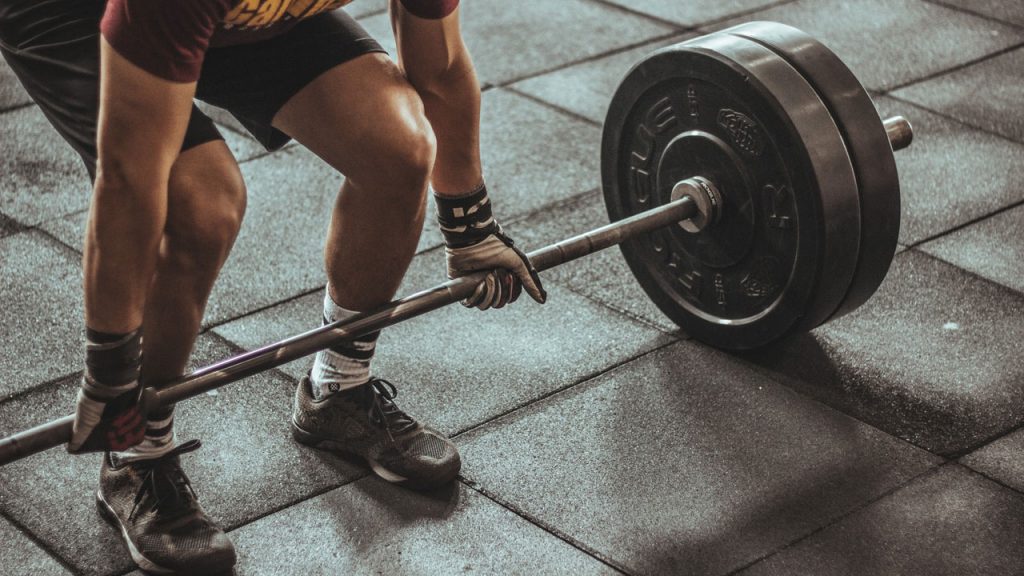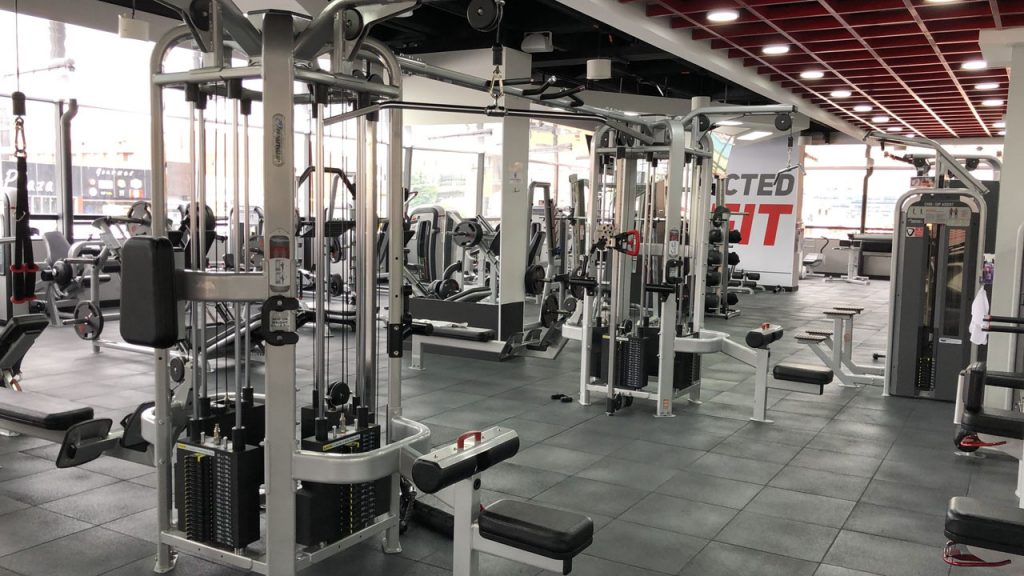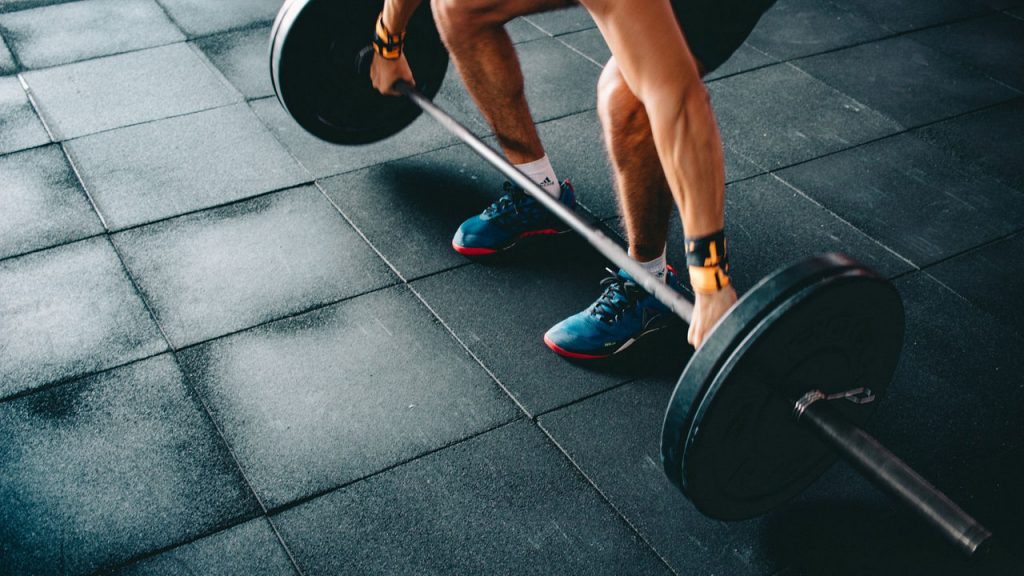Authority Soccer (authoritysoccer.com) is a participant in the Amazon Services LLC Associates Program, an affiliate advertising program designed to provide a means for sites to earn advertising fees by advertising and linking to Amazon.com. This site also participates in other affiliate programs and is compensated for referring traffic and business to them.
All of us have images of soccer players running around the pitch in training sessions. We see them practicing shooting, heading, dribbling; we see them playing mini soccer games in tiny fields.
Goalkeepers jump like crazy from one post to the other, then they get up and jump again to the opposite side of the goal. But do soccer players lift weights?
Lifting weights is part of every sport’s training routine; it stimulates specific muscles and body parts.
For instance, core strength helps soccer players improve their balance, strong legs help develop their speed, and so forth. Weight lifting is a great tool to achieve these goals.
Working out with dumbells and weight plates is not only meant for ego-lifting or losing some pounds before summer. It can be a very productive activity for those who want to upgrade aspects of their game.
Soccer players are no exception to this. The gym is a space they definitely should visit often.
Do soccer players lift weights?
Yes, soccer players must lift weights. Those who are not doing it are giving an advantage to their rivals.
It is possible to put together gym sessions and training plans designed to work out groups of muscles used in specific game situations.
The charges used in workout routines are usually light, focusing not on the muscle’s exhaustion, what is called “until the failure,” but on its elasticity and high responsiveness.
Working out until the failure means exposing the muscle to an exercise with a heavy load and repeating it until the muscle cannot produce sufficient strength to do a single rep more.
Lifting light weights until failure showed in recent research to be more efficient to build muscle, still working out until failure is not recommended for footballers in any of its variations.
The main focus of soccer players in the gym is to improve their speed, stamina, strength, and agility.
Stamina and agility routines rarely involve weights; they tend to be performed with the body’s weight. Speed and strength are the ones that require weights.
To improve their speed and acceleration, soccer players can do some of these exercises.
1. Single-leg squat
Holding a dumbbell with each hand, take a step forward with your right leg, leaving the left leg where you stand. Then bend the knee of your left leg almost to the ground.
The dumbbells to your sides will help you keep balance. Do the same with the other leg.
The secret of the single-leg squat is that it trains your legs to carry significant amounts of weight by themselves, separately.
Having strong legs capable of generating big explosions of strength will help improve the player’s acceleration.
2. Dumbbell bench step-ups

Stand in front of a bench or a high surface at your knees’ height while holding two dumbbells at arm’s length. Step on the bench and use that leg to push you far from the floor while keeping the other leg extended.
This exercise stimulates the same muscle group used to perform a jump while sprinting. This exercise is highly recommended for those players with good heading skills.
3. Weighted sled drags
To perform this exercise, wear a harness attached to some weight. Then lean your core slightly forward and try and run. At first, do short steps, and then increase rhythm and speed.
This exercise demands a massive effort from each body part involved in acceleration: calves, glutes, core, back, and shoulders.
To improve their strength, soccer players could do some of the following exercises.
1. Back squat
This exercise is trendy in cross-fit. You must place a barbell above the traps or on your lower delts. Hold the barbell with a firm grip of your hands, and keep your core straight. Finally, you squat and go up again.
In the back squat, core and lower body muscles work together. It requires a massive amount of core stability. This exercise increases lower body strength and power.
2. Deadlift

To perform a deadlift, you need to grip a barbell following the line of your shoulders. The barbell must touch your shins. Then assume the deadlift position with the shoulders out, the back locked, and the abs and chest flexed.
Keeping the barbell touching your shins, lift the weight without bending your back. Get into a standing position and then put the weight back to the floor.
The deadlift stimulates every back muscle; it increases core stability and core strength.
3. Good mornings
To perform this exercise, place a barbell on your traps or your lower delts, just like in the back squat. Then lean forward at the waistline until your chest is nearly parallel to the ground.
Good mornings work the glutes, the lower back, and the hamstring. It also increases core strength.
Is weight training good for soccer players?
Yes, but as we mentioned above, the weights should not be excessive.
Lifting weights also has an impact on the human mind. When a body is exposed to lifting heavy weights regularly, the body sends the brain a message, it is necessary to produce muscle fiber more suitable to generate massive strength.
The brain’s main job is to keep us alive, and when it receives “alarms” from our body stating that we need to move heavy weights daily, it starts producing muscle tissue more adequate for such a routine.
The weight room should be a place soccer players visit very often. It is possible to do speed training for hours, every day, but until you don’t get your muscles strong, you won’t improve your speed or acceleration.
Speed is power; you need strong muscles must be fast.
Can soccer players be muscular?

There is no problem with muscular soccer players. Of course, not Arnold Schwarzenegger muscular, but lean muscular body types. The goal is to create explosive and robust muscles and not grow them with esthetic purposes.
The 2019/20 UEFA Champions League is the living proof of that. The German Bayern Munich swipes every rival with insulting ease. The German squad had strong muscular players that dominated the game with tireless intensity.
A strong core and strong legs are vital to increasing the player’s speed and balance.
How often do soccer players lift weights?
The players can hit the gym every day. The key is to work out different body parts every day. Like in every training routine, working out the same muscle every day is not beneficial, but it can be harmful.
For instance, if day one is about core strength and upper body, day two must be leg-focused, and so forth.
If a team decides to spend more time training tactics or set pieces, they might do longer gym sessions and reduce their days in the gym. That is entirely up to the coaches.
Soccer player weight training program

Every training program starts with a proper warmup. For soccer players, the best option is what’s called RAMP warmup.
The RAMP warmup consists of three steps:
- Raise – The objective is to raise body temperature with light movements like footing or jogging.
- Activate and Mobilize – In this phase, the focus is to activate the key muscles and joints trained in the current session. It can be squats or pushups.
- Performance – The last part of the warmup is to expose the muscles to a similar level of demand they’ll face during the training session. Sprinting or doing some movements with weights are excellent options for performance movements.
After the workout is done, the players are ready to start their routine.
The first part of the routine is performed without the need for weights. This training routine focuses on core and leg strength. It also helps improve balance, which is also vital for soccer players.
- Core strength – Planks are useful to improve core strength. Front plank, side plank, panther plank, and reverse plank
- Leg strength – Single leg hurdle jumps, single-leg linear and lateral jumps.
The second part is using gym equipment.
- Deadlifts – For beginners or for players with an injury background, a trap-bar barbell is a good option. It decreases the lower back’s stress, allowing lift more weight relatively more comfortably than the regular deadlift.
- Back squats – As mentioned above, the back squat exercises the lower body and core muscles. This exercise also improves hip flexibility.
- Dumbbell side lunge – Lunges make more muscular legs, which translates into faster legs. The addition of the dumbbells requires more effort and helps build muscle faster.
- Dumbbell bench step-up – This exercise helps improve the muscular group used in jumping and sprinting. This exercise’s secret is that it is perfect to increase hamstring strength, vital for having more potent and responsive legs.
- Kettlebell swings – This exercise activates several body parts. It works the glutes, the hips, shoulders, lower back, and it increases core strength. It is also suitable for improving the player’s explosiveness in the field.
The last part of the training is stamina and agility training.
For increasing stamina, the best options are the treadmill, burpees, and lateral band walks.
For agility, medicine ball pushups, lateral hurdle sprints, and forward and backward sprints.

